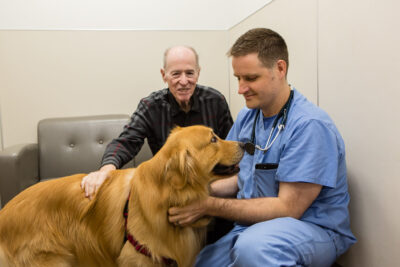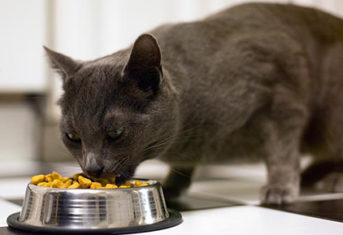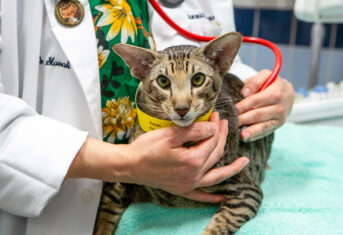CKD, BUN, USG, and AKI: How to Talk to Your Pet’s Veterinarian About Kidney Disease

CKD, BUN, USG, and AKI: How to Talk to Your Pet’s Veterinarian About Kidney Disease
World Kidney Day is March 10 and the theme for 2022 is “Bridge the knowledge gap to better kidney care.” In this blogpost, I’ll help bridge the kidney care knowledge gap in veterinary medicine by explaining common acronyms veterinarians use when we talk or write about kidney disease. As an example, here are a few grammatically correct and medically plausible sentences that are unintelligible unless you know the words behind the abbreviations.
Mrs. Jones, I am concerned Fluffy has CKD because the BUN is elevated. I recommend a UA with a USG to help determine if there is a complicating UTI. This situation could progress to AKI unless we intervene appropriately.
Chronic Kidney Disease (CKD)
The acronym CKD refers to a slow process where the kidneys gradually lose function. Animals with CKD initially have no clinical signs, but laboratory evaluation of a urine sample may reveal decreased urine concentrating ability or elevated protein levels. Annual blood tests will show small but gradual deterioration of kidney function. In the past, CKD was often referred to as CRF, or chronic renal failure, but today we reserve the term “failure” for end stage kidney disease. Veterinarians use the International Renal Interest Society’s (IRIS) guidelines for the diagnosis and assessment of kidney disease in dogs and cats.
Blood Urea Nitrogen (BUN)
The BUN is one of several blood tests veterinarians use to evaluate kidney function. The BUN can be influenced by diet, intestinal bleeding and a low body condition score. When evaluating kidney health, veterinarians interpret BUN alongside a USG (see below) and another kidney test called creatinine.
Urinalysis (UA)
Urinalysis is the test that evaluates a urine sample. This test measures nearly 20 parameters to give a snapshot of kidney and bladder health.
Urine Specific Gravity (USG)
When a laboratory analyzes a urine sample, they use a refractometer to measure the specific gravity, which is a measurement of how much water is in the urine. A high specific gravity indicates a small amount of water in the urine and is commonly seen with dehydration. A low specific gravity indicates a large amount of water in the urine. A low specific gravity might indicate your pet just had a big drink of water, is drinking too much water or the kidneys have lost the ability to concentrate the urine, a common occurrence in CKD.
Urinary Tract Infection (UTI)
A UTI is one of the most commonly diagnosed diseases of the urinary tract. Females have a shorter urethra (urine tube from the bladder to the outside of the body) than males do, and the short urethra predisposes them to UTIs. Dogs and cats receiving steroid therapy and those with CKD are also predisposed to urinary tract infections. If bacteria causing a bladder infection travels up the ureters (urine tube from the kidneys to the bladder), the infection can affect the kidneys and is known a pyelonephritis.
Acute Kidney Injury (AKI)
AKI develops suddenly and can resolve completely with treatment. However, in some patients, AKI leads to the longer-term CKD. AKIs can occur in a variety of ways. An infection in the kidney is just one type of AKI. An infection could also ascend from the bladder to the kidneys or be a systemic infection like leptospirosis. Toxins, like lilies for cats, or ingestion of medications that damage the kidney are other causes of AKI. Obstruction of urine flow by stones or a tumor can result in AKI.
I hope this tutorial on words and abbreviations commonly used when discussing kidney disease will make conversations about your pet’s kidney health much simpler.

































